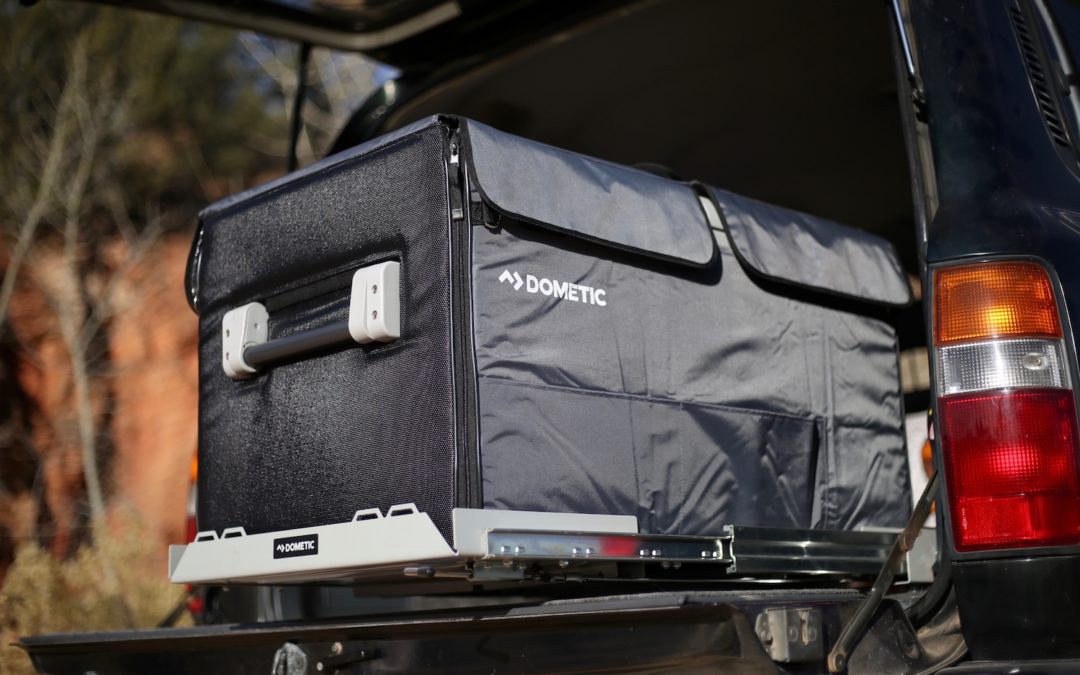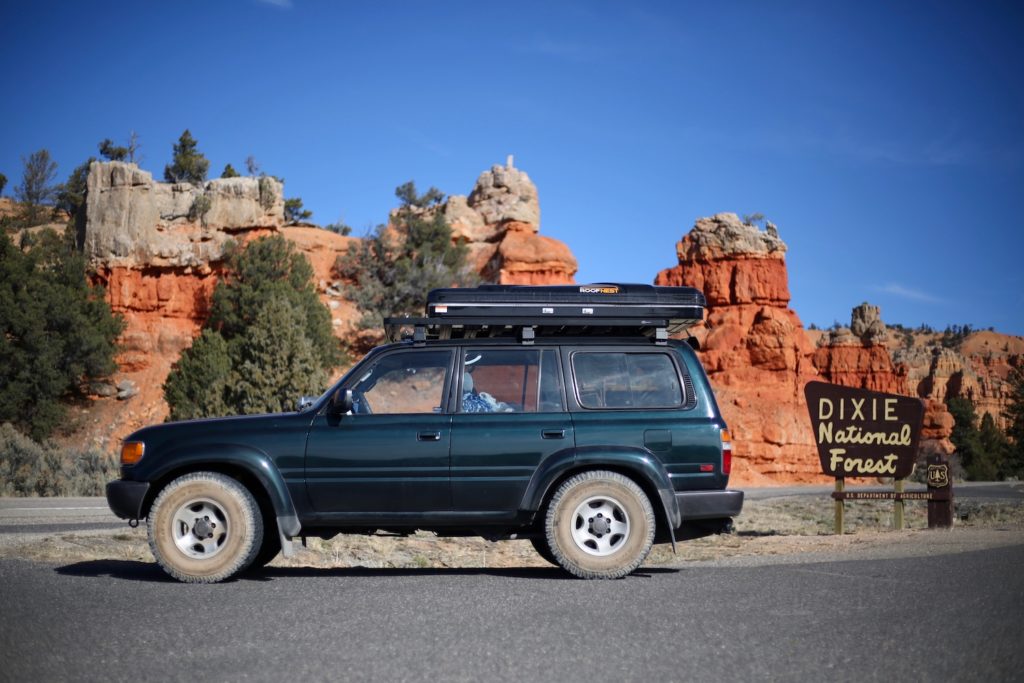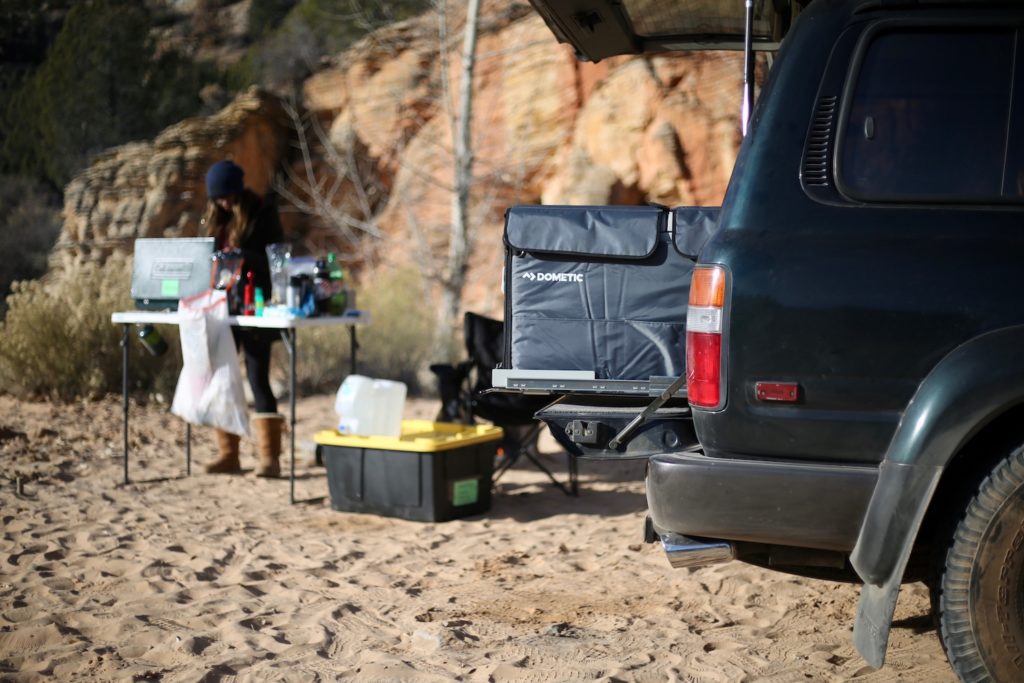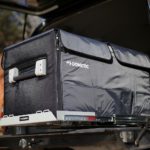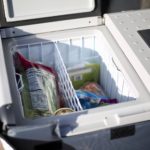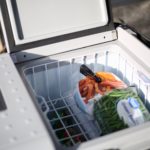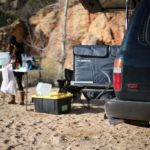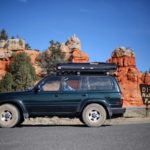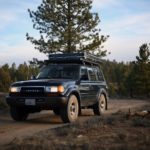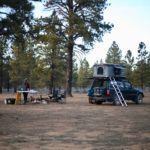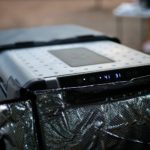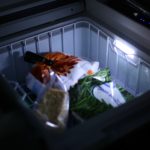Sometimes I miss the days when I needed nothing more than a sleeping bag, a ground tent, and a few granola bars to enjoy a weekend outdoors. Youth had a part to play in my minimalist pleasure (sleeping on the ground these days guarantees a chiropractic visit), but it was more-so obliviousness to available conveniences.
As I matured, I introduced luxury after luxury, resulting in more comfortable excursions. I traded a ground tent for a rooftop refuge, my backpack for a capable 4×4, and granola bars for a stovetop and red meat. It became increasingly difficult to camp with inferior gear, but the trips grew more extravagant and exciting, so I leaned into the change. Today, it’s impossible to imagine even an overnight escape without my accessories.
Through all these upgrades, however, I maintained a traditional cooler. At first, a $20 off-brand unit was sufficient, but it didn’t take long before I secured a double-walled, well-insulated model from a big-name manufacturer. Replenishing ice every three days instead of every 12 hours was such relief — or so I thought.
All was going well until an overland buddy brought a new toy to our group getaway. Badged “Dometic” and drawing power from his truck’s standard 12V DC port, this portable refrigerator kept food at a steady 40°F, had ample capacity, and didn’t require a single ice cube. My spell was broken – I needed to get my hands on a travel fridge.
A month later, I have Dometic’s CFX 75DZW fridge stocked with food for a five-day, 2,000-mile round trip to southern Utah. Plugged into my home’s AC outlet, the fridge needs just two hours to cool from 70°F to 40°F for the larger compartment, and to 5°F for the smaller one.
At dawn, I wrap the fridge in its insulating cover, load the hefty unit onto the Dometic fridge slide in the back of my 1994 Land Cruiser, plug the DC stem into the socket, turn on the fridge’s Wi-Fi, and hit the road. Before my trip, I’d intended to setup a dual battery system so the CFX could run exclusively off the accessory battery. I successfully installed the additional battery, but failed to sort out the inverter. As such, the accessory battery is now powering the fridge, but the car’s alternator isn’t recharging it.
Gear and supplies obscure a clear view of the Dometic’s display from the front seats, so I ask my wife to pull up the CFX app to check on the temperatures. 40°F and 5°F – just as we’d left it an hour ago. She slides the temp setting for the smaller compartment down to 0°F just to be safe, then goes back to scrolling Instagram.
Two fill-ups and eight hours later, we arrive at camp in Toquerville, UT. It’s getting dark and frigid in a hurry, so we break out the headlamps, layer up, and get to work. Thirty minutes later, the stove and table are assembled, the fire’s going, the tent is erect, and we’re hangry. I slide out the fridge and retrieve the hamburger ingredients. A bright LED light helps me find everything quickly and individual fridge doors allow me to access the cold foods without disturbing the temperature in the frozen/smaller compartment.
After dinner, we dig into the freezer compartment for some ice cream (because why not make ourselves colder?), then stow the fridge for the night. The next morning, I climb down the tent ladder, open up the car and find the CFX display blank. Overnight, the accessory battery had dropped below the CFX’s low voltage cutoff, so the fridge turned itself off. I swap DC sockets so the cooler is getting power from the starter battery, and the unit turns on. With the outside temperature at 22°F, the CFX is even colder than our pre-set temps — the food is safe.
It’s another two hours of driving to Bryce Canyon, with several stops along the way for photos, gas, and a short hike. Outside, it’s warmed to 65°F, but when we stop for lunch, we pull chilled cold cuts, romaine lettuce, and apples from the CFX. Based on the previous night’s rushed effort to eat and clean before it got too cold, we decide to find our campsite before sunset. Using coordinates from our friend’s trip a year prior, we locate a secluded spot in a BLM forest.
I kill the engine and start the countdown to when the fridge will hit the 12-volt battery cutoff. When we head off to bed three hours later, the fridge has switched to standby, meaning the internal temperature is stable at or below our pre-sets.
The same pattern repeats for the next three days and nights. From the moment we fire up the truck to several hours later when we find camp and turn off the ignition, the CFX silently saves the day. And in the interim between the fridge switching to stand-by and breakfast the next day, Dometic’s insulated cover and efficient design fight off rising temperatures.
The thought of returning to even the highest quality cooler after experiencing the bliss of a Dometic travel fridge is inconceivable. Maximizing our time and peace of mind in the great outdoors is well worth the price of admission — even if we feel a bit spoiled.

